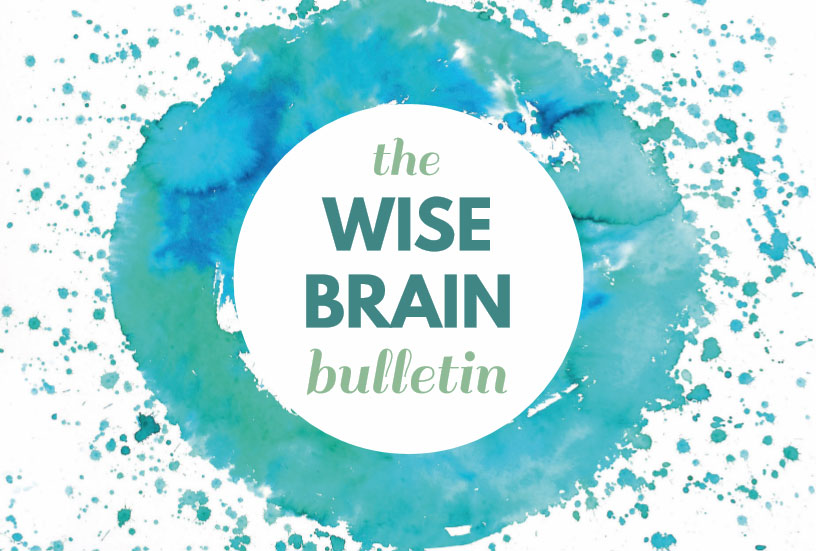News and Tools for Happiness, Love, and Wisdom
Volume 18,3• June 2024
In This Issue
Getting Stuck
© 2024 Norman Farb, PhD and Zindel Segal, PhD
It’s the same thing your whole life, clean up your room, stand up straight, pick up your feet, take it like a man, be nice to your sister, don’t mix beer and wine ever…oh yeah, don’t drive on the railroad tracks.
—Groundhog Day

Groundhog Day Every Day
Shanice took a deep breath, traded in her steady gig managing a large PetSmart, and struck out on her own. Her confidence came from noticing how many products customers kept asking for that PetSmart didn’t carry. She understood the risks of walking away from a good salary, cashing in most of her savings, and signing a twelve-month lease for office space—all without having booked a single order. Still, the network of suppliers and veterinarians she’d built up as a manager offered the perfect starting point for selling her own line of custom-designed and personalized pet toys, clothing, pet trackers, and GPS collars. Besides, she thrived on passion, hustle, and relentless effort—exactly what’s needed to launch a successful business. For months, she did it all: hired employees, ran strategy meetings, met with manufacturers, and did anything else that was needed. One year in, though, Shanice was spending more time at the office than ever, running on adrenaline and stale coffee. Then she began to lose it. She found herself having trouble concentrating, getting irritable at home, and misplacing orders, until one day it all came to a head. Shanice found herself sitting in a stairwell crying because she had no idea what was going on or what to do about it. “I feel used up,” she said, sobbing, “there’s nothing left to give.”

If Shanice’s story sounds familiar, that’s because she’s by no means alone in her struggle. Surveys indicate that 28 percent of entrepreneurs experience founder burnout. The same nose-to-the-grindstone habits that make entrepreneurs successful also can lead to their downfall. The really insidious thing is that, even as she hit the wall, Shanice felt as if she had no choice but to keep banging her head against it. And from her brain’s perspective, she didn’t. Despite clear signs of exhaustion, her brain—specifically the default mode network—highly conditioned to respond to stress by buckling down and pushing harder, refused to entertain even the possibility of changing gears or changing course.
This kind of meltdown happens not just to entrepreneurs, but to artists, teachers, doctors, engineers—anybody who pours themselves into their work. Nearly a third of adult US workers reported feelings of workrelated exhaustion before the pandemic,1 and now more than 50 percent of workers would describe themselves as experiencing burnout.2 Success offers no protection from this feeling—we’ve seen it recently with worldclass athletes.3 When the deeply ingrained approach to overcoming adversity is to keep on keepin’ on, taking a break can seem like failing, even when it’s clearly the right thing to do.
Maslow’s Glass Ceiling
In the early 1940s, the American psychologist Abraham Maslow developed a concept that’s been passed along in introductory psych courses ever since. He visualized the hierarchy of human needs in the form of a pyramid, with the stuff that keeps us alive—food, shelter, warmth—as merely the foundation, necessary but by no means sufficient for producing a feeling of life satisfaction.
Complementing the burnout data discussed earlier, a recent US poll revealed that only two in five Americans describe themselves as being near the top of Maslow’s pyramid, achieving self-actualization or self-transcendence, or in the positive state we might call flourishing.4 Furthermore, one in five—that’s 60 million people in the United States—described themselves as experiencing the opposite of flourishing—languishing—with younger adults the most likely to be in this state of listlessness and unrest.
Considering how far we have come as a species, why are so many of us languishing? To answer this question, we can turn to the work of another luminary from the 1940s, Hungarian-Canadian endocrinologist Hans Selye, who introduced the world to the “general adaptation syndrome,” more commonly known as the stress response.
The Body Keeps Score
Selye’s contribution lay in helping us to understand how and why the breakdown occurs. Over decades of research, he demonstrated that our bodies respond to the presence of stress in three predictable phases: an initial alarm phase, where we become aware of the stress and are motivated to act; a resistance or adaptation phase, in which we attempt to live with the presence of the stressor; and, if the stress doesn’t resolve, a final phase of exhaustion that’s biologically catastrophic, sometimes leading to the death of the organism.

What makes Selye’s work so relevant to our discussion is that, while technology and culture have changed dramatically, the hardware of our bodies hasn’t changed much in at least a hundred thousand years. What we call “languishing” is consistent with hardware that’s been pushed to the breaking point by unresolved stress.
But why are so many well-fed, safe, and reasonably secure people feeling such debilitating, chronic stress? For one, twenty-first-century capitalism is not for the faint of heart. Today’s world seems to leave everything up to the individual, from health to career to retirement planning to twenty-seven different options for telephone service, all while we’re expected to raise kids and perhaps care for aging parents, not to mention broader concerns about inflation, global warming, assaults on democracy, and a work culture that now expects you to be on call 24/7. So, the ambient stress level is often amped up to 11. Even when there are no immediate threats to life or limb, a lack of job security, past threats to our safety, or anxiety about the future nevertheless force us to watch for perils lurking just around the corner.
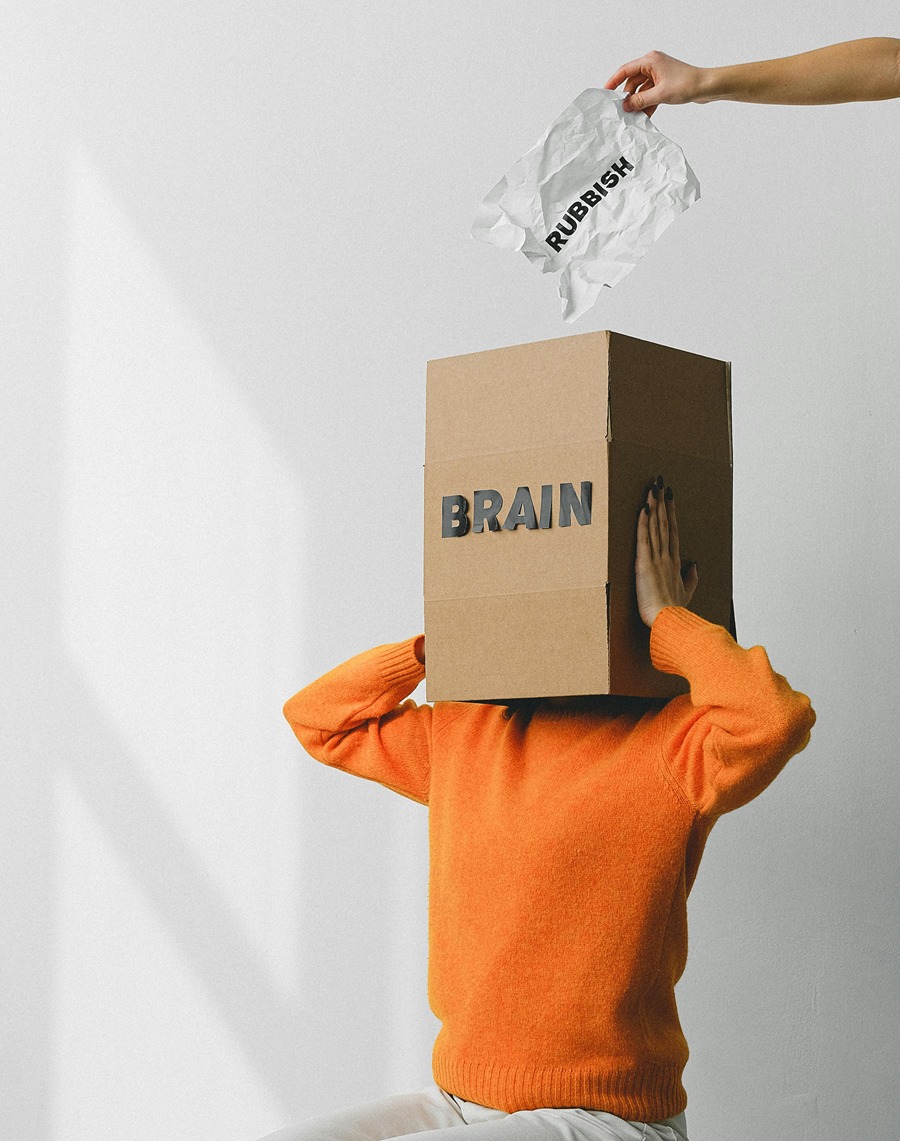
Persistent anxiety about an ambiguous future is exacerbated by social networks and platforms that represent reality in a skewed fashion. Twitter and Facebook have come under fire for business models that seek to keep us engaged with shock and outrage and threats to our sense of safety and security. Meanwhile, they purposely promote content that undermines our sense of adequacy to sell us things we may not need.5 Leaked internal documents show that when Instagram became aware of how negatively their site was affecting the mental health of teenage girls, their only response was to try to determine how to get these impressionable young women to spend more time on the platform.
Our mental space has long been fought over in a battleground characterized by political scientist Herbert A. Simon as “the attention economy.” And what is the most surefire way to capture someone’s attention? To suggest an imminent threat. Each tweet or blast on your news feed hits your nervous system the way the sound of a breaking twig might create panic if you’re walking home at night and you think someone may be following you.
We can’t update our neural hardware, which evolved to manage hunting and gathering hundreds of thousands of years ago, but we can update the software. And we can do this by revising the “internal programming” we’ve developed to organize our experience and conduct our daily lives. This does not mean “improving” our habits. It means getting beyond habit.
Meanwhile, Back in the Ivory Tower
Since the 1970s, physicians, psychologists, and others have offered techniques such as meditation and yoga for dealing with relentless stress, burnout, disengagement, and depression.
As a psychologist, coauthor Zindel Segal helped develop mindfulness-based cognitive therapy, among the most widely used training programs for promoting mental health. In the spring of 2004, he met coauthor Norm Farb, a grad student working on some of the first neuroimaging studies on how mindfulness training changes the brain. Together, we found that we had the perfect matchup of skills for leveraging mindfulness training to understand the transition from languishing to flourishing in the brain.
A clue from the clinical literature suggested that individuals who take things personally—the folks who view the remarks, gestures, and actions of others as being directed at themselves—often had greater psychological difficulties. So, perhaps meditation worked by reducing self-reference. After all, classic meditation texts hold out the promise of “non-self,” “no-self,” or, to quote musician and singer-songwriter George Harrison, dropping the “I, me, mine.” Buddhism, one of the ancient traditions that gave rise to mindfulness and meditation, teaches that the self is nothing more than a mental fabrication, and seeing things through the lens of the self can be a source of suffering and division. From a Buddhist perspective, flourishing begins with holding a “beginner’s mind,” where you let go of expectations related to your self-concept. But how to measure a person’s degree of self-centeredness? Fortunately, we were able to tap into a line of Western research three decades in the making.
In the early 1970s, Fergus Craik and colleagues at the University of Toronto demonstrated the role of self-reference in how well we retain information. They showed that study subjects who were asked if a word applied to them as individuals remembered the word better than subjects who were asked something less personal, such as whether the word was printed in upper or lower case. The discovery that the brain prioritizes self-reflection above other types of thinking was an important finding, validating the Buddhist characterization of mental life but also helping to explain why people get stuck in negative self-evaluation. If self-judgment is a prioritized mental process, then we can begin to understand Selye’s description of becoming locked in a resistance mode leading to burnout: resistance begins with a self-judgment of “I’m not sure I can handle this,” and the brain prioritizes these judgments to the exclusion of other options.
In 2005, we ran our first neuroimaging study with a similar protocol. We asked participants to judge whether certain words described them or not, a lab-controlled version of “am I good enough” judgments that trigger the stress response. Previous studies had identified the brain regions supporting self-reference as being along the brain’s midline, more specifically in the medial prefrontal cortex.6 It was not terribly surprising, then, that the midline of the brain lit up for our participants who’d been asked to judge.
Then came the critical test. We asked participants to read the trait words without any self-evaluation. Instead, we asked them to sense any physical sensations, feelings, or thoughts they might have in response to these words. We hypothesized that sensing would suppress the conceptual, reasoned self, and the impact of self-judgment along with it. After all, if you get rid of the self, there’s no one to have low self-esteem, guilt, and hopelessness, right?
We knew that the deck was stacked against our participants’ ability to shift to sensing. The memory studies from the 1970s showed that the brain prioritizes self-judgment over nearly any other type of thought. More recent work dubbed the brain structures imposing this priority as the default mode network. The DMN dominates mental life even when the brain is at rest, diverting resources away from sensory parts of the brain. To give ourselves a fighting chance of showing an escape from this strong bias toward self-reference, we enlisted people who’d signed up for an 8-week Mindfulness Based Stress Reduction (MBSR) course, hypothesizing that these participants had at least begun to learn how to reduce self-reference through meditation. We compared their responses to folks who signed up for MBSR but had not yet received it.
We pored over the functional MRI (fMRI) data, looking for specific evidence that meditators were able to turn down the tendency to view themselves judgmentally. Our hypothesis showed limited success: when people focused on sensing their experience, we saw less activity in DMN brain areas that supported judgment in both the untrained and trained groups alike.
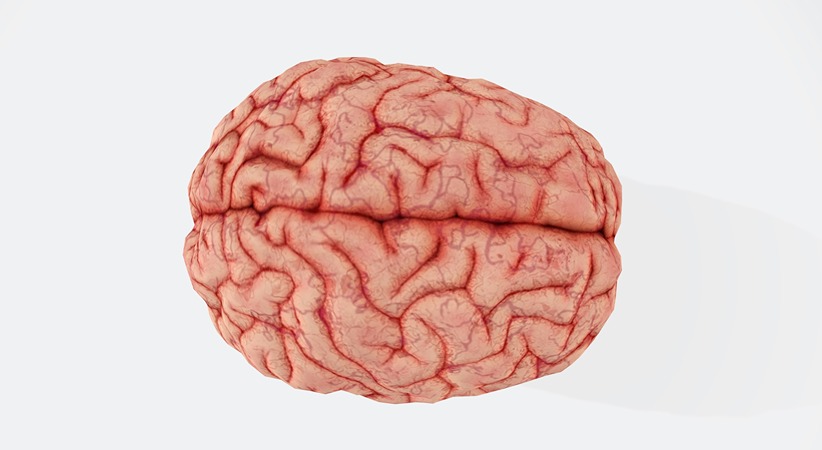
However, we couldn’t find much evidence that people trained in mindfulness were better at reducing self-judgment. We tried every trick in the book to illuminate this effect and spent nearly a year redoing analyses. We sat in meeting after meeting talking about how this “self region” in the brain just wouldn’t turn off, bemoaning the fact that mindfulness training wasn’t supporting our theory. We kept brushing past evidence of training effects in other parts of the brain. That’s because they weren’t where we expected them to be. We weren’t seeing what we were looking for, namely, the curtailing of conceptual self-reference. Instead, we were seeing greater activity in seemingly irrelevant parts of the brain that supported body sensation.
And then it hit us. Mindfulness meditation’s benefits don’t come from getting rid of the self. What the data showed was an expansion of the self in the form of immediate sensory input. The negative self-judgments are weakened not by “judging judgment” and suppressing the impulse but by enriching the self-concept with novel, conflicting, disruptive, and ultimately creative experiences. Rather than turning off the parts of the brain that support judging, people trained in sensing had learned to turn on other brain regions dedicated to sensation.
We all know intuitively that a blast of sensation can lift our mood. Stepping away from thinking and striving, stepping into our bodies’ ability to sense the world—watching waves crashing onto a beach at sunset, smelling lilacs—can momentarily ease stress and clear the mind.
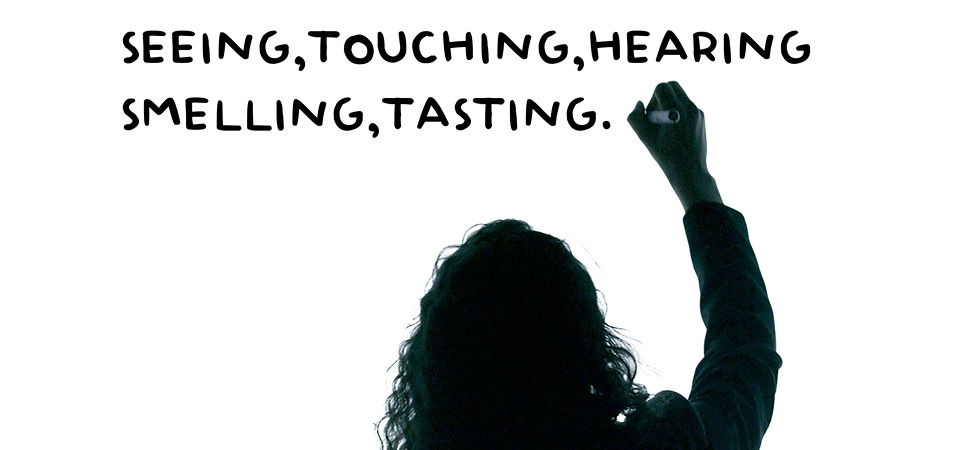
Exercise: Meet Your Senses
Immersing yourself in sensation might mean watching the sun set over the Pacific from a cliff near Big Sur or taking in the salt and ozone smell of a tropical rainstorm from under a shuddering palm tree. But nothing says it has to be that majestic.
The participants in our studies learned to engage in sensation right where they were, as part of their daily routine. It takes practice, though, partly because our senses are so adept that we usually take their work for granted.
Here are some exercises to get you started. You can do them anywhere, but it is important that you set time aside and eliminate distractions. You get what you pay for, and in doing these exercises you really need to pay attention.
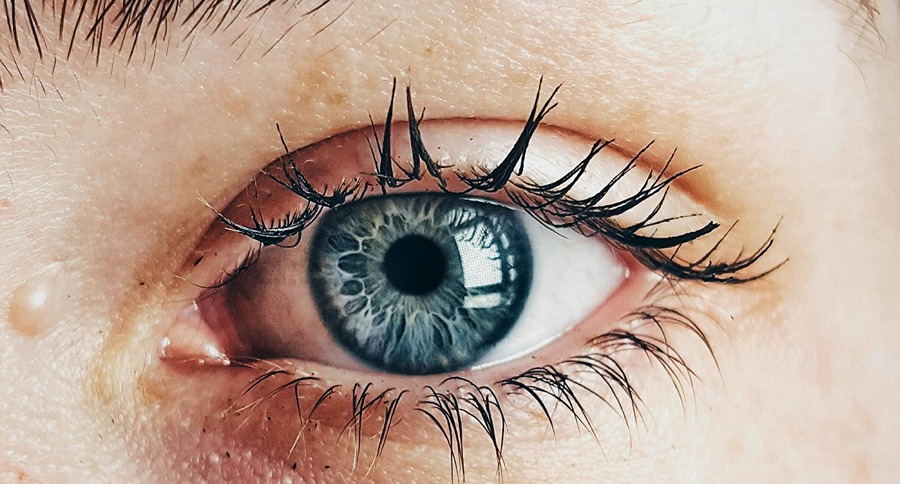
1.Seeing
Your eyes translate light into complex image data for the brain to decode. Seeing is considered the most powerful of the senses because we rely more on sight, compared to hearing or smell, for collecting information from the environment.
The practice: Whether you’re indoors or outdoors, look around you and pick out five things that you can see, and name them or write them down. Then close your eyes for a moment. When you open your eyes, look around you again, only this time, pick out five things you didn’t see the first time, maybe because they were in the background or were lost in a busy scene. Take a moment and actually name each thing that you notice.
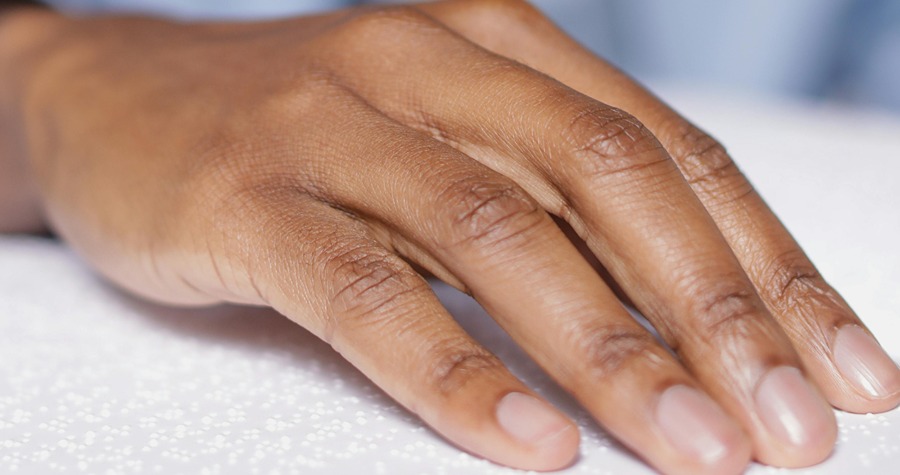
2.Touching
Touch, perhaps the very first sense that humans develop, works through specialized receptors just under the skin to convey signals about pressure and temperature to the brain. Being the body’s biggest organ, the skin can provide a quick readout on what you’re experiencing.
The practice: Whether you’re indoors or outdoors, ask a friend to collect a variety of small objects for you and place them in a bag, so that you don’t know what to expect. These can include anything: a rock, a coin, a pencil, a tennis ball, shells, leaves, rice. Then close your eyes and place your hand or hands in the bag and feel each item, exploring its contours and dimensions. You may be able to recognize and name the object, but more important is to notice what it is like to touch without knowing, to see what shows up before the label is applied.
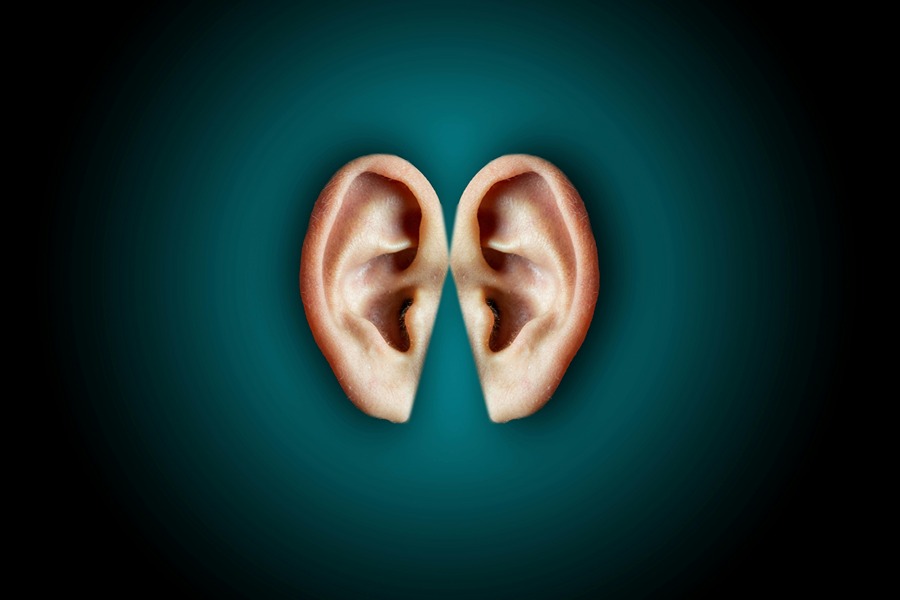
3.Hearing
Hearing results from sound waves in the air hitting our eardrums, which transfer vibrations through bones and fluids to send sound signals to the brain. Sound waves vibrate at a unique frequency, and when they arrive at the ear, they are amplified so that the brain can distinguish between speech, laughter, music, and the rest of auditory experience.
The practice: Search your memory for the last few times you walked outside, then make a list of sounds that you might have heard. Depending on where you’re located, these might include a car approaching or honking, birdsong, people talking, a door slamming, wind moving branches, subway doors closing, a dog barking, footsteps on grass or gravel. Now head out and listen for these sounds, and as you hear each one on your list, cross it off.

4.Smelling
Smelling starts when we inhale through the nose. Chemicals in the air hit cells on the roof of the nasal cavity and olfactory cleft that transmit information to the brain to decode as smells. It is estimated that we can detect more than 1 trillion different scents.
The practice: Find five things in your house or outside, some familiar and some unfamiliar, and smell them. As you inhale, try to label each scent as vividly as you can, naming it if possible but also considering what you most associate it with. For example, the citrus tang of an orange peel might call to mind clementines in wooden crates, eaten with family during the holidays. Some smell starting points might be coffee grounds, a bath towel, cooking spices like cinnamon, ginger, or curry powder, a bar of soap, boiling water, potting soil, your underarm, wet leaves. Smell and memory are located close to each other in the brain, which explains why smells often trigger recollections. Pay attention to see if any of these smells produce this effect.

5.Tasting
The tongue is our principal taste organ. Thousands of taste buds break down tastes into categories of salty, sweet, sour, bitter, and savory. Chewing and swallowing lead to tastes from different parts of a meal inevitably combining in our mouths. Each of these tastes is sensed by the tongue, and these taste data are sent to the brain. The brain then decodes this information to provide us with flavors we can identify.
The practice: The next time you eat something, see if you can name each distinctive taste—salty, sweet, sour, bitter, or savory. This can be during a snack where you might be eating only one thing, or during a meal where you will be eating a variety of foods. When you recognize one of the principal tastes, say its name out loud.
Like our study participants, you may have noticed that it isn’t always easy to immerse yourself in pure sensation. Often, there are other things going on in our minds, even when we try to focus and pay close attention. The amount of effort it takes to remain focused on sensation underscores the stickiness of more familiar ways of relating to our experience, the habits and mental routines that structure our mind and keep us stuck.
REFERENCES
1. Ashley Abramson, “Burnout and Stress Are Everywhere,” American Psychological Association, January 1, 2022, https://www.apa.org/monitor/2022/01/special-burnout-stress.
2. Kristy Threlkeld, “Employee Burnout Report: COVID-19’s Impact and 3 Strategies to Curb It,” Indeed for Employers, March 11, 2021, https://uk.indeed.com/lead/preventing-employee-burnout-report.
3. Melanie Anzidei, “Naomi Osaka’s Decision to Step Away from Tennis Shines Light on Athlete Burnout,” NorthJersey.com, September 11, 2021, https://www.northjersey.com/story/sports/tennis/2021/09/11/naomi-osaka-us-open-2021-lossleylah-fernandez/8278595002/.
4. Jennifer Berg, “Ipsos U.S. Mental Health 2021 Report,” Ipsos, May 21, 2021, https://www.ipsos.com/en-us/news-polls/ipsos-us-mental-health-2021-report.
5. Georgia Wells, Jeff Horwitz, and Deepa Seetharaman, “Facebook Knows Instagram Is Toxic for Teen Girls, Company Documents Show,” Wall Street Journal, September 14, 2021, https://www.wsj.com/articles/facebook-knows-instagram-istoxic-for-teen-girls-company-documents-show-11631620739.
6. P. Fossati et al., “In Search of the Emotional Self: An fMRI Study Using Positive and Negative Emotional Words,” American Journal of Psychiatry 160, no. 11 (2003): 1938–1945.
ABOUT THE AUTHOR
 Norman Farb is an associate professor of psychology at the University of Toronto Mississauga. He studies the social neuroscience of the self and human emotion, with a focus on how biases in self-representation shape emotional reactions that determine well-being.
Norman Farb is an associate professor of psychology at the University of Toronto Mississauga. He studies the social neuroscience of the self and human emotion, with a focus on how biases in self-representation shape emotional reactions that determine well-being.
 Zindel Segal is distinguished professor of psychology and mood disorders at the University of Toronto Scarborough. His research examines the use of mindfulness meditation in promoting affect-regulation skills in people suffering from depressive and anxiety-based disorders.
Zindel Segal is distinguished professor of psychology and mood disorders at the University of Toronto Scarborough. His research examines the use of mindfulness meditation in promoting affect-regulation skills in people suffering from depressive and anxiety-based disorders.
Profs. Farb and Segal are co-authors of Better in Every Sense, published by Little, Brown Spark in January 2024.
Wholehearted Confidence
© 2024 Fleur Chambers
Dance with your shadows until they transform into something beautiful.
Everywhere we turn our gaze, we are receiving messages (both subtle and strong), that to feel confident, we need to eradicate all self-doubt, imposter syndrome or fear of being judged. We start to believe we must get rid of all these ‘shadows’ and become a constantly bright beacon of positivity and self-belief to be successful, and therefore, feel confident.
Of course, this isn’t possible, and before long, we go to war with that voice in our head telling us we aren’t good enough. We are hard on ourselves when we feel nervous before an important work meeting. We tell ourselves that if we were truly confident, we wouldn't care what other people thought of us. We would step into a new career, creative project or relationship with assuredness and ease.
Wholehearted confidence offers a different (and refreshing) way to interact with our insecurities. Rather than seeing their presence as a sign of our own failure or as a roadblock on the path to feeling comfortable in our own skin, this version of confidence includes accepting these aspects of ourselves and ultimately, learning from them.
Wholehearted confidence is a brave invitation to hold our humanness with such curiosity that ultimately, our shadows become our wise (and often humorous) teachers. I find this idea – that real confidence is about being with it all, the light and the dark, the assuredness and the insecurities – a huge relief.
It’s a giant yes to every aspect of ourselves and our entire human experience. Interestingly, the majority of people in my meditation community felt this sense of relief too.
So, after a lifetime of disliking that little voice inside our heads, after years of telling ourselves that successful and confident people never feel like an imposter or a fraud, how do we begin to develop more wise relationships with these shadow aspects of ourselves? How do we make room for them so that we can access their wisdom?
Part two of this book teaches you the exact four-step framework I developed – dancing with your shadows. It also provides you with some raw and honest examples of how people all around the world have used the framework to navigate and learn from their insecurities and vulnerabilities. Perhaps you’ll smile as you see aspects of yourself in their stories.
Dancing With Your Shadows – a Four-Step Framework to Navigate Your Humanness
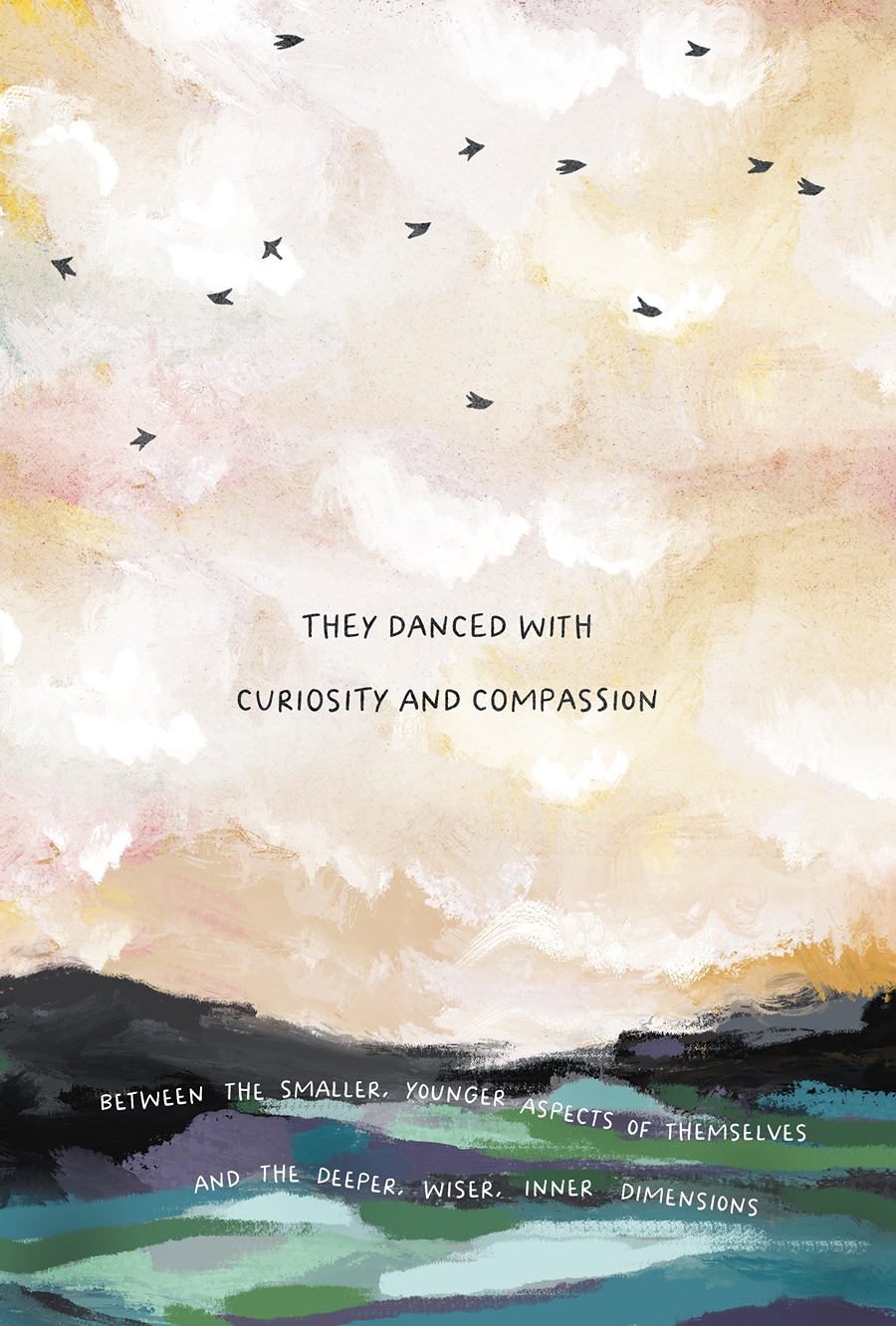
This is a spiritually informed, mindfulness and somatic-based framework I developed for identifying, exploring and learning from your humanness.
I’ve been told by some community members that it compliments Internal Family Systems – a transformative tool developed by Dr Richard Schwartz that helps people understand their protector and wounded parts. Other students have shared how exploring this framework has deepened their spiritual practice and capacity for self-acceptance and compassion. And those students without an interest in psychotherapy or spirituality have found the experience illuminating, rewarding and deeply satisfying.
The four steps for dancing with your shadows are:
1. Identify and welcome.
2. Meet it in your body.
3. Be honest.
4. Access a deeper truth.
Step One – Identity & Welcome
The first step is to identify your shadows, these parts of yourself that you don’t particularly like or accept, inner aspects that you often hide from others, feel embarrassed about or ashamed of. Whilst many of these shadows are interrelated, in my research I was able to place the most common shadows under three key headings:
● Not enoughness.
● Imposter syndrome.
● High expectations.
Now you might be thinking that identifying your shadows seems like an easy task. But in truth, these aspects of ourselves have often been around so long that we actually see them as part of our personality.
For example, if you say things like, ‘Oh, I’m always hard on myself, it’s just who I am,’ you may be surprised to discover that this isn’t your core personality – you are just over-identifying with the not enough shadow.
If you identify as someone who needs to get things perfect to feel satisfied, exploring the shadow of high expectations might allow you to see yourself in new and liberating ways.
Identifying our shadows requires a sense of openness and curiosity, a willingness to see the aspects of you that you have long hidden or resisted with kinder, more accepting eyes. Let’s start gently together, with the following practice.
Writing Practice – Getting to Know Your Shadows
Set aside ten to fifteen minutes. Make yourself a cup of tea, turn on some music, whatever you need to get in the mood. Respond to these questions in your notebook or journal. If you feel like exploring all three shadows at once is overwhelming, you can choose one of the headings below, which resonates for you, and focus on those questions. Come back to the others another time.
Not Enoughness
- Do you find it difficult to accept yourself just as you are? Write about a time when you felt like you weren’t enough.
- Do you try and be more than what feels easy and natural (more productive, organised, disciplined, intelligent, skilled, reliable, kind, funny)? Describe how this plays out in your life.
- Do you have a ‘not enough’ narrative that is playing in the background most days (not slim enough, smart enough, successful enough, interesting enough)? Write this narrative down and explain when you feel it the most.
- Do you sometimes see life through the lens of scarcity? For example, when someone shares their success, is there a part of you that is worried there won’t be room for you to be successful too? Describe a time recently when you felt this way.
Imposter Syndrome
- Do you downplay your achievements or attribute your success to luck or timing? Describe a time recently when you did this.
- Do you worry that you are going to be found out, that people will discover that you are not the real deal? If so, write about when this feeling is strongest.
- Do you have trouble receiving external praise? Make a note of the last time you rejected a compliment or pushed back on kind words.
High Expectations
- Do you often get to the end of the day and feel disappointed in yourself, in how you acted, what you did or how much you achieved? Write about how this makes you feel.
- Do you replay conversations and wish you had acted differently? Explore how this affects your sense of self.
- Do you over prepare or over-plan your week as a way of feeling in control? Is this an old or a new habit? Write about where it might come from.
Naming Your Shadow
To my surprise, when I asked people in my community to name their shadows, their responses were creative and humorous. For example:
- Anna Anxiety.
- Chrissie Babble
- Kurt.
- False Cassandra.
- Ms Guardian.
- Doubting Deb.
- Blaming Bertha.
- Charlie My Wild Side.
- Scaredy Cat.
- Paper Tiger
- Grumpy Control Freak.
- Morning Dread.
- Devil on One Shoulder
These responses made me smile for two reasons. Firstly, they revealed people’s capacity to tackle a potentially heavy topic with lightness. Secondly, they showed a willingness to create space between themselves and their shadows. With space comes choice and ultimately freedom to break free from the over-identification with these aspects of ourselves.
Now it’s your turn. Pick the shadow that is speaking to you most strongly and give it a name. (There are no silly answers!)
Step Two – Meet It in Your Body
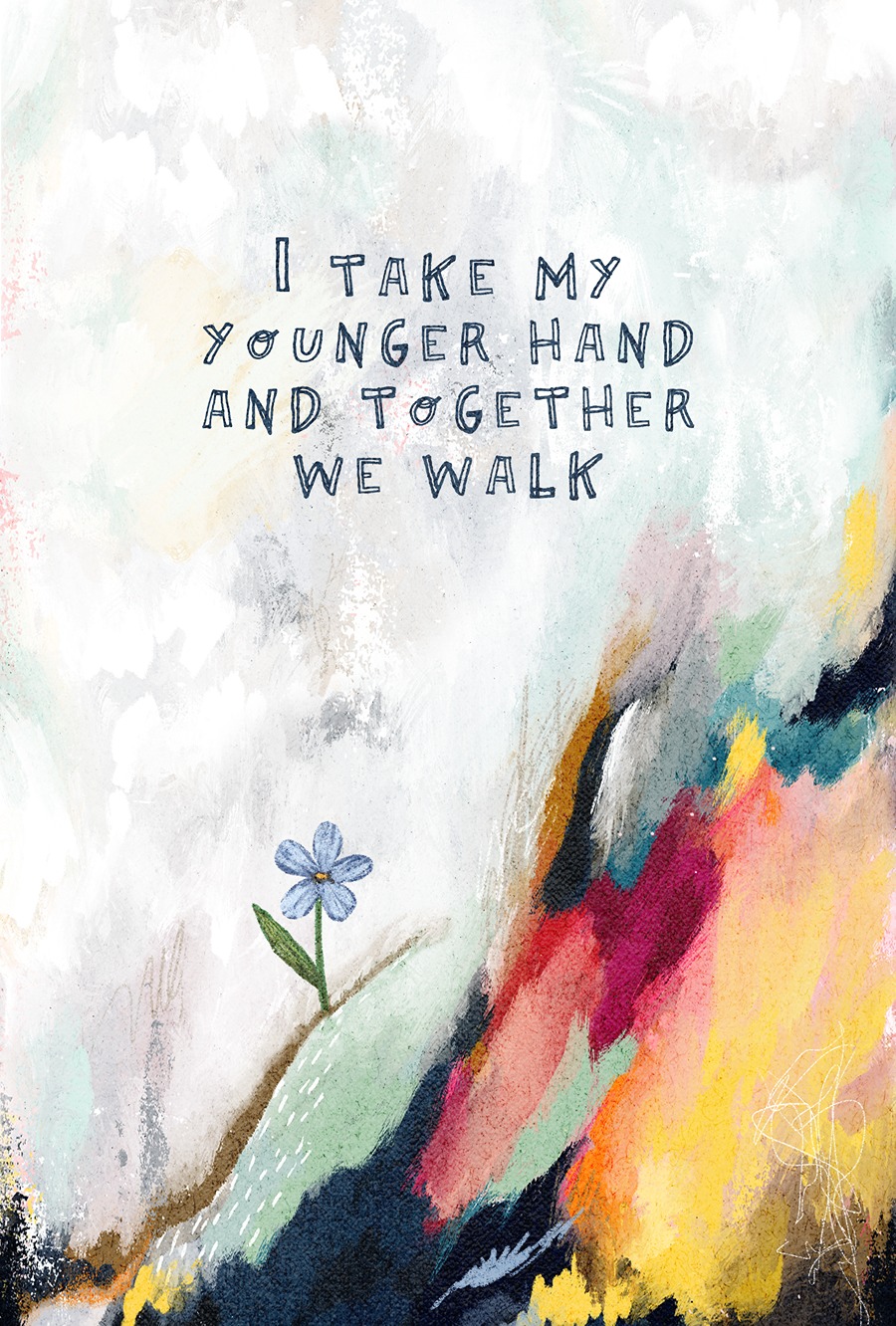
The second step is to explore how this shadow feels and expresses itself in your body. It’s best to do this in real time as you experience the shadow. But for now, let’s use our memory and imagination. Think back to a time when a shadow swept over you (a time when you feel like you weren’t enough or that you would be caught out) and reflect on these questions:
- Where do I feel it in my body?
- Does it have a colour, shape or texture?
- Is it moving or still?
- What words would I use to describe it: rough, smooth, sharp, dull, blunt, opaque, see-through, shiny, heavy, light and so on.
There is no right or wrong way to explore felt sensations or to connect with the imagery that may arise. Trust your own ability to locate this shadow in your body. Remember, if the sensation feels too strong, you can always move your attention to a part of your body that feels more neutral or to the image of the sky above smiling at you. Exploring your shadows as part of wholehearted confidence includes trusting that you know when to move in and out of this four-part process.
When I asked my community how they experienced their shadows physically, it varied – a lot! As you can see from the lists below, shadows can find home in different parts of our bodies and present in a diverse range of ways.
Physical manifestations of the shadows:
- Heavy weight in the upper body
- Pressure across the eyes.
- Nausea in the gut.
- It begins in the mind, then it wraps itself around the body.
- A weight across the shoulders.
- A sinking feeling deep in the stomach.
- A lump in the throat.
- A hot, red feeling on the face.
- Numbness.
- Pain across the upper back.
- Soreness in the hips.
Disclaimer: some of these symptoms can also be linked to serious medical conditions, so listen to your body and take responsibility for seeking guidance from a medical professional.
Visual representations of the shadows:
- A heavy cloak.
- A big ugly smudge.
- Dark, heavy rainclouds.
- Thick, braided beige rope with sharp strands of jute pointing outward like wiry thorns.
- A greenish presence with surgically sharp edges.
- A dark brown mud.
- A heavy, burgundy coloured curtain of fear.
- A ball of yarn.
- A set of nested Russian dolls.
- Mirages of danger in my mental map of the universe.
Some shadows seemed to take on a life of their own, with participants commenting:
- ‘It’s a chameleon – anything bright and shiny to lure me away from what I want to accomplish.’
- ‘Charlie is like the wind, always moving, changing speeds and impacting the environment.
- ‘It’s like a vacuum sucking up all and any motivation to understand, improve or feel creative.
- ‘It is a jitteriness – like discordant notes being played on a piano.
- ‘It feels like a vortex or tornado, spinning around.
- ‘It covers me like a skin, immobilising me into inaction.’
- ‘This shadow feels like a huge, oily, dirty black ocean churning and splashing in me, disintegrating my wholeness and self-worth.’
- ‘It sweeps over my head; the negative self-talk is black and ugly and takes over all rational thinking.
Once you’ve explored what the shadow looks and feels like in your body, take a few minutes to breathe into this part of you. As you breathe in, imagine that pure oxygen is arriving at the shadow, almost greeting it like an old friend. See if you can imagine each breath softening or soothing the shadow. Notice what happens to the shadow when you do this. Does the shadow change shape? Does sensation dissipate?
Here’s what happened when people in my community sent their breath towards the shadow as a way of welcoming and soothing it.
- ‘The cold blue feeling diffused like clouds disappearing into the sky.’
- ‘The dark sphere in my chest lightened in heaviness and reduced in size.’
- ‘I saw a scared young girl who just wants to be accepted for who she is.’
- ‘The tornado slowed, its intensity lessened and eventually, it turned into a puff of wind.’
- ‘My shoulders dropped, and the tension melted away. The sensations were still there, but I wasn’t suffering from them.’
- ‘The cloak dissolved and disappeared. I connected with my personal power.’
- ‘The heaviness lifted, and I could begin to hear the other, more supportive voice that lives within me.’
- ‘When I offered the oily, dirty black ocean my breath it calmed down. The shadow loosened its grip. Space was created between my true self and the shadow’s story.’
These responses, whilst diverse, all reveal the possibility that when we offer the shadows our non-judgemental awareness and our breath, sensation changes and we have greater capacity to unhook. From here, it’s possible to connect with the deeper, more whole aspects of ourselves.
Step Three – Be Honest
After identifying our shadows and exploring their felt expression within our bodies, it’s time to get radically honest. Grab your notebook or journal and respond to these four questions:
1. When I am caught up in this shadow, how do I feel about myself?
2. What actions do I take?
3. What do I miss out on when I’m believing/over-identifying with this shadow aspect of myself?
4. What function does this shadow perform? How is it keeping me safe?
In my research group, people shared how their shadows made them feel: defective, insignificant, ashamed, frightened, overwhelmed, separate, incapable, inferior, defeated or broken.
In many cases, when people were caught up in the shadow energy, they took less care of themselves and acted in ways that didn’t feel healthy or aligned. Respondents reported eating more unhealthy food, hitting the snooze button rather than exercising, meditating or doing yoga, snacking at night, scrolling social media for hours and making unnecessary purchases online. People also reported not speaking up in work meetings, actively hiding parts of themselves with others, lying or avoiding telling the truth.
Can you relate to any of these experiences? What do you do when pulled in by your shadows?
Step Four – Access a Deeper Truth
Now that we have softened this shadow, it’s possible to communicate with it and potentially access some wisdom or a deeper truth. This step requires courage, honesty and a willingness to see ourselves and our lives in new ways.
You can open the lines of communication by asking your shadow the following questions (in any order):
- What do you need from me?
- How can I support you?
- What message do you have for me?
- What are you here to teach me?
In my community, people’s shadows asked them for:
- Compassion and understanding.
- To be seen and heard.
- Unconditional love.
- More time being creative.
- Rest.
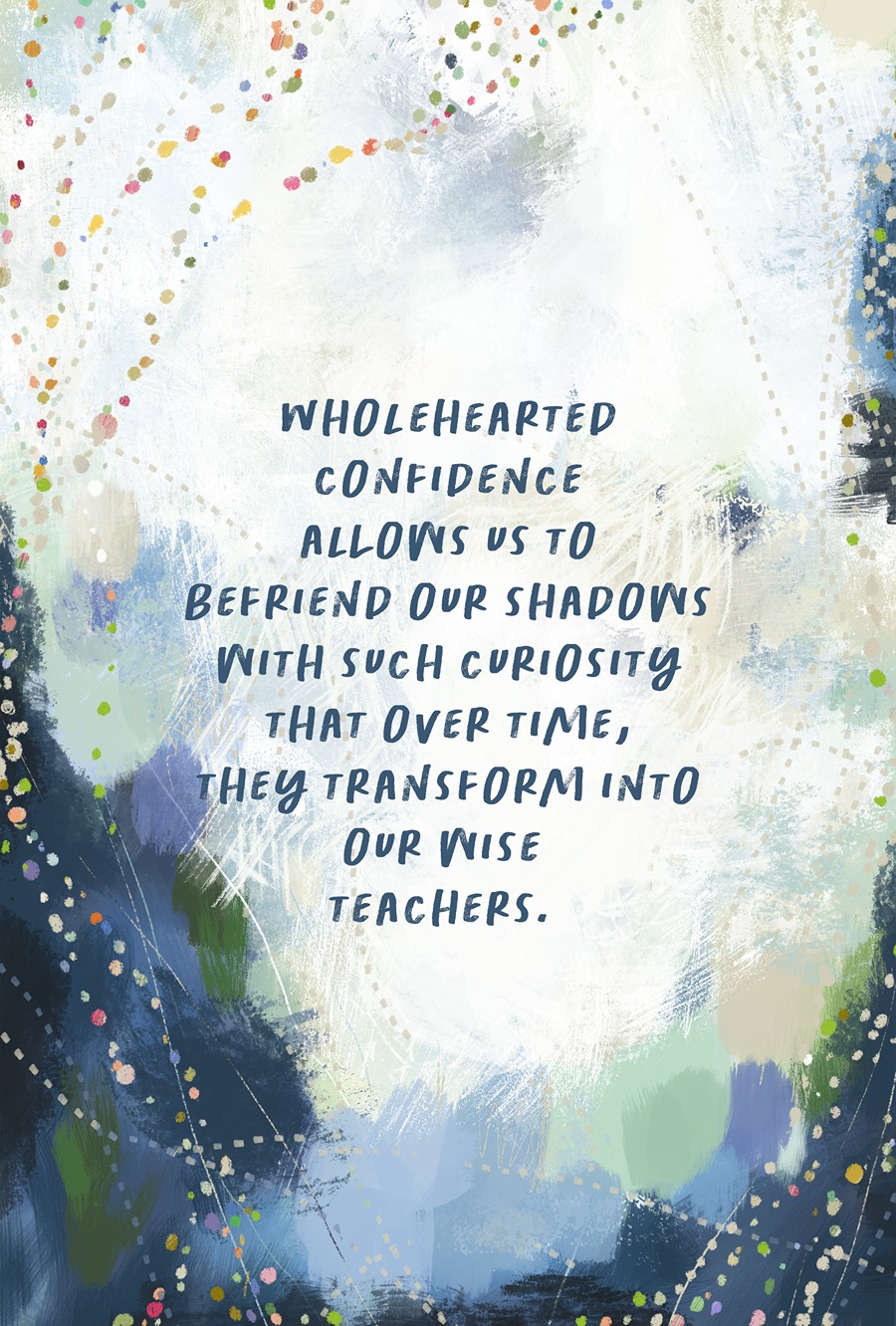
When opening to a deeper truth, people learnt that it was time to:
- Stop valuing the opinion of others above their own.
- Advocate for themselves.
- Not take on people’s opinions of them.
- Realign their lives towards their values.
- Come back to the basics of good food, exercise, meditation and journalling.
- Receive the support of family and friends.
- Pursue creative endeavours.
- Speak from the heart.
- Forge new friendships.
- Be brave and live more purposefully.
It was a delight for me to witness people from all around the world make this process their own as they opened the lines of communication between their shadows and their deeper selves. Community members asked their shadows what they needed. They soothed these parts of themselves – hugged them, held them, listened. They wrote letters of compassion and understanding.
They danced with curiosity and compassion between the smaller, younger parts of themselves and the deeper, wiser inner aspects. They deconditioned the habits of shame and aversion and moved towards wholehearted confidence, the willingness to be with, and learn from, the parts of themselves they often resist or hide.
ABOUT THE AUTHOR
 Fleur Chambers is a multi-award-winning meditation teacher, Creator of The Happy Habit app, best-selling author of Ten Pathways and Wholehearted Confidence and philanthropist. Through her guided meditations, courses and books, Fleur is helping people all around the world accept and embrace their entire lives, even the challenges and difficulties.
Fleur Chambers is a multi-award-winning meditation teacher, Creator of The Happy Habit app, best-selling author of Ten Pathways and Wholehearted Confidence and philanthropist. Through her guided meditations, courses and books, Fleur is helping people all around the world accept and embrace their entire lives, even the challenges and difficulties.
 With proceeds from The Happy Habit funding grassroots projects in some of the poorest communities around the world, Fleur is using meditation and self-enquiry as tools for social change. To date, The Happy Habit has provided sixty thousand people with access to a lifetime’s clean drinking water.
With proceeds from The Happy Habit funding grassroots projects in some of the poorest communities around the world, Fleur is using meditation and self-enquiry as tools for social change. To date, The Happy Habit has provided sixty thousand people with access to a lifetime’s clean drinking water.
Often referred to by her students as gentle, curious and warm-hearted, Fleur reminds us that there is strength in softness and that we are safe to be ourselves.
 Eliza Todd is the artist and illustrator behind the brand A Peace of Werk. She is a mixed media artist who licenses her art to brands for stationery and home decor worldwide. Through her brand, Eliza strives to create art that is uplifting and encourages us to remember that through all of life’s ups and downs there is beauty and richness to be found in the journey. You can follow her on her Instagram page @apeaceofwerk or visit her at www.apeaceofwerk.com.
Eliza Todd is the artist and illustrator behind the brand A Peace of Werk. She is a mixed media artist who licenses her art to brands for stationery and home decor worldwide. Through her brand, Eliza strives to create art that is uplifting and encourages us to remember that through all of life’s ups and downs there is beauty and richness to be found in the journey. You can follow her on her Instagram page @apeaceofwerk or visit her at www.apeaceofwerk.com.
Togetherness
© 2024 Tom Bowlin
That feral
Cat
Is laying there
In the dark
Up against the
Screen door
Just watching
Me
We’re both
Less lonely now
ABOUT THE AUTHOR
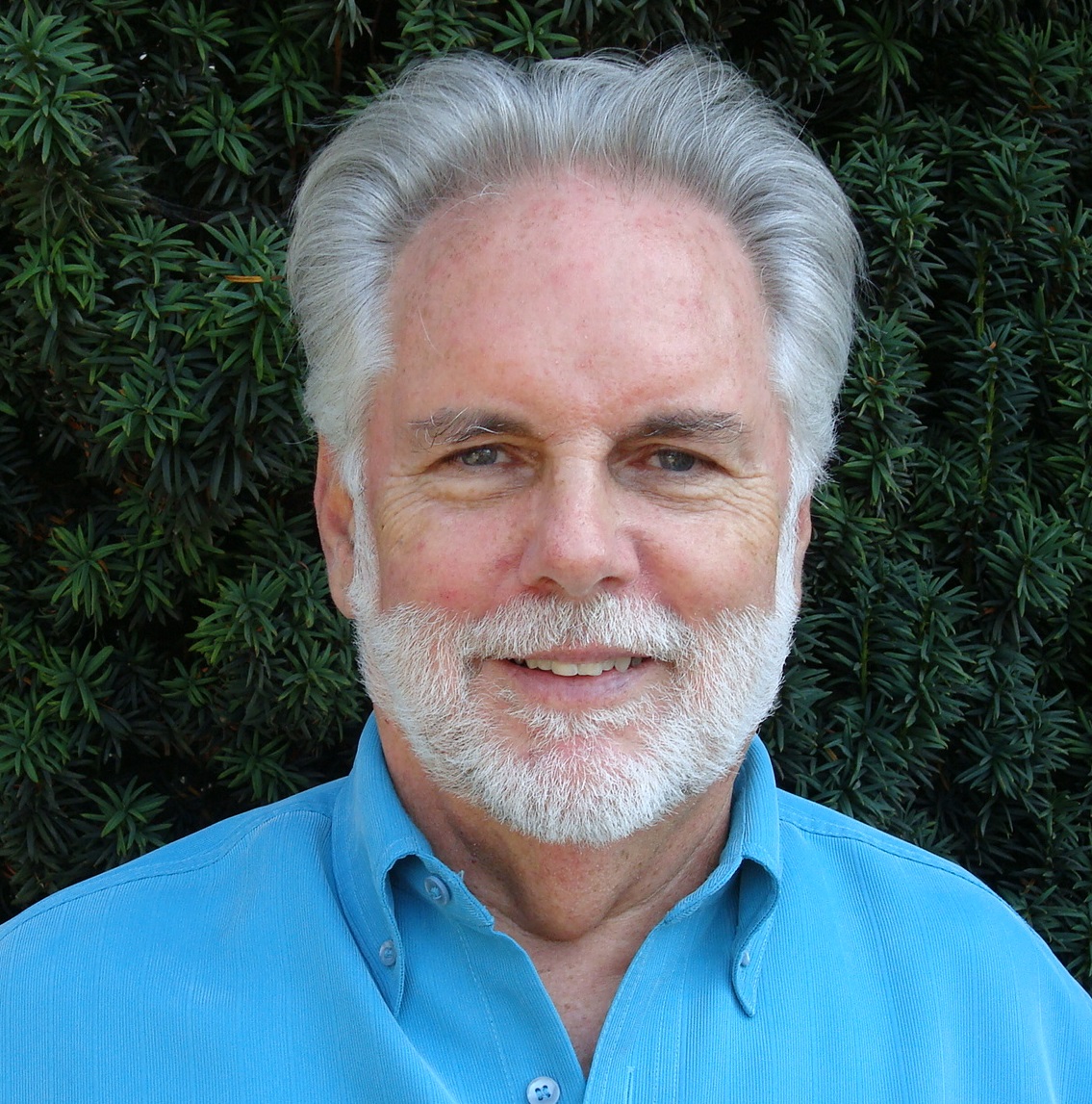 Tom Bowlin writes about what life is like for us, what’s been done to us, what we do to each other, and what we just think sometimes. Tom lost his son at an early age and many of his poems are about loss and the hard times we all experience. His poems don’t always reflect his personal beliefs, instead he views them as short stories about “us.” His two poetry books are Us and Love and Loss.
Tom Bowlin writes about what life is like for us, what’s been done to us, what we do to each other, and what we just think sometimes. Tom lost his son at an early age and many of his poems are about loss and the hard times we all experience. His poems don’t always reflect his personal beliefs, instead he views them as short stories about “us.” His two poetry books are Us and Love and Loss.
Finding Safety After Trauma
© 2024 Finley De Witt
How can we begin to feel safe again after we’ve experienced trauma? This is a question that has occupied me for most of my adult life, both as a client and as a trauma practitioner. Safety is such a fundamental issue for any nervous system and really great safety protocols and properly informed, trauma-sensitive spaces and practices benefit us all.
Our nervous systems predict future safety or danger based on what has happened to us in the past, which means that after any overwhelming experience we’re likely to be on high alert, primed to see potential threats in all sorts of stimuli: a sudden noise or movement, a certain expression on someone’s face, the color of a wall. This information is often registered outside of our conscious awareness and so we’re left wondering why on earth we feel so anxious. It can take time to begin to recognise the hidden elements in a situation that make us jittery and stressed and to figure out what might be needed to help us breathe more easily again. Each of us will have a unique ‘neurosignature’ for danger - a complex web of memories, thoughts, beliefs, images, visceral feeling patterns and connections that are associated with overwhelm. Pull on any part of this web and it can trigger a reflex of fear. The good news is that the moment our ‘safety messages’ outweigh our ‘danger messages’, our systems will relax.
What conditions signal safety to your system?
To begin to be your own safety detective, think of a time when you felt moderately stressed or anxious. Think about where you were, who you were with and what you were doing. Note down as many elements of the situation as you can, including the sights, sounds, smells and other sensations you experienced as well as your thoughts and feelings. Notice how your mind and body respond as you remember these things.
Now, imagine that you can transform as many elements of that situation as you wish, one at a time, until you have created a sense of comfort and safety for yourself. You can change who you were with, what was said, the details of the physical environment and the events that happened. You can give yourself whatever props and support you like. Keep going until you register a feeling of relief or relaxation.
When I do this exercise, I almost always want to imagine more warmth or other physical comforts to help me through the difficult time, as well as a good friend by my side and a contained place to sit. Our ‘safety neurosignature’ will be as unique to us as our ‘danger neurosignature’, but here are some elements that commonly facilitate a feeling of safety:
- A person or pet we love
- A friendly face
- Shared laughter
- Engaging in a creative task we enjoy
- Being in nature
- Enjoyable movement
- A sense of awe or wonder
Feeling safe in peopled places

Whenever people gather together to engage, there’s likely to be some level of trauma that needs gentle holding, even if it’s unspoken. I’m a lifelong learner and no-one learns well when they’re stressed, so one of my first questions when I’m going into a new learning situation is, are my needs and concerns met with care? Do I have a sense of agency and control? Here are some related questions you might like to consider when you’re going into a new group situation:
- Are there real opportunities here for me to ask questions and make requests?
- Am I given choices about how and when to engage, and when to take a break or a back seat?
- Are my individual needs taken into account? These might include medical, disability or other health requirements, understanding of neurodivergence and/or respect for how I identify and how I prefer to be addressed.
- Am I feeling over-compliant or people pleasing? Is something telling me it’s not ok to differ or to mention a difficult issue? A trauma-sensitive approach will enable us to disagree or make a complaint and still feel connected and accepted.
In new situations I also remind myself that I don’t know what other people have been through or what their own personal triggers are, and so I aim to be gentle and respectful rather than taking it personally if they don’t respond to me as I would like.
An interesting thing about potential triggers is that we receive more data coming into our central nervous system from our body than we do from the combined input of everything we see and hear coming in from the outside world. If we slow down and stay curious about our inner sensations, rather than being too quick to label them as unpleasant or unwanted, this can give our systems a sense of reassurance and possibility. If we start to fight what we feel, we may inadvertently create more stress inside.

Being realistic
There are countless methods available for calming our nervous systems, from breathing techniques and deep, vibrational humming to gong baths, flotation tanks, yoga practices, body scans and other complementary therapies. And there’s plenty of advice out there on nutrition, sleep, exercise and other aspects of self-care. These can be hugely helpful if we pick the ones that resonate for us. But if there’s an underlying, undigested experience from the past that involved a credible experience of threat to our safety, sooner or later it’s likely to rear up again, no matter how many soothing techniques we’ve learned. This doesn’t mean we’ve failed; everything we’ve done to create a sense of safety may mean that our system finally begins to trust that we’re resourced enough to face the hard stuff. It took me a long time to understand this.
The safety paradox
For many years, I kept asking myself why, with all my grounding practices, my meditation, my daily yoga, my social skills for co-regulation, did I still feel a deep dread that refused to go away? This, it turns out, was the crux of it: my dread could not go away. It needed to be seen and heard and understood. It wanted the old, repressed trauma to be witnessed, processed and healed. The parts of me that were suffering wanted to be loved and held. All the wonderful practices I did, beautiful and nourishing though they were, were also in danger of telling my system that my terror was unacceptable, that my most intensely difficult emotional experiences had to be suppressed, instead of honored and understood.
Through Stephen Porges's work on polyvagal theory, I came to recognise the incredible things our systems do to keep us away from unendurable pain and yet I wasn't treating my own danger signals like the valuable messengers they were. It's been a paradox I've had to hold, these past few years, both for myself and in what I offer to my clients: do we try to regulate our nervous systems to find safety and containment or do we find a way to go to whatever it was that overwhelmed us in the first place so that we can help it to resolve?
If our trauma was long ago, in childhood, we might only have intimations of it, vague hunches that something wasn’t quite right. We may not reach clarity about what we experienced until our systems are ready for us to know; until we’ve found a supportive framework. It's fundamental, then, that we understand how to go safely. Yet here is another paradox: we trauma survivors certainly require a lot of safety, but if we’re told too often about 'containment' and the 'window of tolerance', we may start to feel that our agony is too much to handle and then where are we? Haven't we often felt that we're too much, when in fact it wasn’t us at all, but the things that happened to us that were too much? It can be shaming to nervous systems that have survived the unthinkable to be told they’re fragile. In the right context, those of us who’ve been through the most horrible experiences can handle a huge amount – often far more than we’re given credit for.
Top tips for navigating the safety paradox
- Look for allies who help you to feel regulated and who also have the courage to go with you on your trauma healing journey.
- Find a practitioner who recognises that intensity is not the same as overwhelm. If you’re ok to be with your painful feelings, if you’re not fully taken over by them and there’s still an element of witnessing, then you’re safe.
Remind yourself you have a choice: you can focus on all the effective practices out there that increase interoceptive awareness and bring your neurophysiology into a more balanced state, or you can go for a deeper dive. Some practitioners aim to combine the two; I've certainly done sessions where we do some nurturing bodywork for half the time and then move on to explore the trauma, but I’m wary of suggesting that grounding or resource-building is always necessary. Another option is to titrate the experience. We can go to the painful stuff for just a few seconds, then come back. We can do this multiple times until our system trusts that we won’t be overwhelmed. This way, we build confidence about how much courage is truly available to us.
What to look for in a trauma-informed practitioner

Here are some protocols that suggest a practitioner is likely to be trauma-informed. There will be others, of course, and you may want to make your own list if you’re thinking of starting therapy:
- A sense of shared ownership of the therapy space, including options on where to sit, whether to face the therapist or to look out of the window (or elsewhere); whether to have your eyes open or closed, etc.
- Choice about how much space to have between the two of you and negotiation about all offers of how to work together - in particular any suggested exercises or touch.
- A therapist who holds their own thoughts lightly and who trusts the intuition and direction of your system first and foremost, even if it doesn’t make sense to them at first.
- A therapist who comes to the session without preconceptions or assumptions and respects your framework beliefs, your preferred language, your metaphors and imagery and any triggers you may have.
- A therapist who recognises when their own agenda has come in and who owns that and can apologize freely when they get it wrong for you.
Claiming your space
Some of my own clients like to lie down, some like to sit on the futon mat or in the chair and others spend time walking around the room or sitting on a bouncy ball or a wobble stool, which can be helpful for some neurodivergent folks or for those who simply want to experience more of their body weight and movement. Some clients like to face the window and look out to the sea. Some turn their back to me. I ask them where they'd like me to be: next to them or further away? I ask them to take a good look around the room, to notice anything they find pleasing or familiar. We might take some moments to do this together, because a slow head turn in itself is regulating. 'Ah yes,' I sometimes say, ‘no saber-toothed tigers lurking over there!' If we laugh together, there’s some great co-regulation going on.
A deeper dive: starting your healing journey
When we first decide to seek help with our distress, it’s common for part of us to want to rush towards the vulnerable stuff to get things sorted as quickly as possible. That’s understandable, but there’s also likely to be another part that’s reluctant or even a part that doesn’t think anything needs to change. Perhaps there’s also part of us that doesn’t want to be in therapy at all. No doubt all of us know what it was like to be made to go to school, do homework, or learn piano when we didn’t want to. And, intriguingly, some parts may not want to 'get better’. Might we get less love, less care, less understanding if we seem more resilient? It’s an understandable concern.
How do we navigate all this? It’s helpful to offer all of these thoughts and feelings a seat at the table. A good practitioner will welcome everything, recognising that our skeptical parts are beautifully sensitive to anything that doesn’t land right and that our reluctant parts hold valuable information about fears and concerns that need to be explored. If we don’t acknowledge them, they'll likely scupper things sooner or later. And if we recognise that one part of us says we had a happy childhood while another part feels distressed, it’s a great step towards embracing our natural, healthy multiplicity.
We experience our minds and bodies from the inside
For twenty years, I worked with a ‘hands on’ approach to healing, offering somatic methods and tools for grounding and self-regulation. When I was doing touch-based treatments like holistic massage, clients would often ask: 'What are you picking up, what do you notice?' I’d tell them that I didn't set much store by what I was feeling from the outside, that we all have a different qualities of tissue density, different bumps and crunchy bits, and these don't indicate anything much at all about the health or condition of the tissue. I'd let my clients know I was much more interested in what they were experiencing, from the inside.
This can be disappointing to hear, at first. It would be nice if someone could tell us what was wrong and go ahead and fix it, right? Practitioners have a map and can be skilful guides but as clients we’re the ones walking the territory and that has far more to it. A guide can let you know where you might want to head while you're getting a feel for the land, a sense of the sights and sounds and steepness, and you’ll see crevasses your guide isn’t aware of. If they know from past experience there may be crocodiles in the lake, of course they should let you know.

Trusting your experience
- Look for a practitioner who offers appropriate guidance, but who also respects your inner wisdom and moment-to-moment experience.
- A good practitioner won’t have your insights for you or give advice unless you welcome it. They’ll be a secondary source of information for your mind and body and will offer their input with some modesty, willing to be rebutted if they’re off the mark.
Thinking, believing and distracting
The Western world privileges analysis, and psychotherapy and psychology have often lost their way in this respect, offering interpretations rather than following the innate wisdom of the client’s felt sense of things. This can lead to a cognitive bypass. Our inner worlds have their own logic and they don’t usually respond well to interventions by our thinking minds. It’s wonderful to be able to have great ideas and to connect the dots, but how do we invite in the rest of our material, especially the stuff that happens when our cognition is offline? Similarly, our beliefs can lead us to a spiritual bypass: some systems are very good at offering up flowers and chocolates so we don’t notice the poisonous snake in the corner.
More questions worth asking
- Is my thinking mind working overtime?
- Do my beliefs make things spacious so that I can better bear with the uncomfortable stuff, or do they let me bypass my pain?
- Am I going in this direction only as a distraction from the rougher territory?

No need to work hard
I also want to offer that as trauma survivors we shouldn’t have to try so much anymore. We've tried hard enough, worked hard enough. I’ll sometimes say to a client, 'Let's not work on anything, let's simply be with what's there, let’s just visit with it.’ I don’t know about you, but my system doesn’t want to be made to feel it’s hard work to be around.
Notice the judgements
I spent a lot of time encouraging my bodywork clients to explore new language, because language shapes perception and perception is everything. When they said things like, ‘I’ve got bad knees, it’s old age, wear and tear; I’m broken,’ I might offer that it’s true that a pair of knees might have the kisses of time but they can still be good knees. There’s a parallel here with trauma work. Many of us have learnt to believe we're being ‘defensive’ or ‘resistant’ when things don’t seem to be progressing as anticipated. But we do well to honour our valuable protectiveness that is only wanting to keep us safe. Going slowly gets us there quicker in the end.
Hope
In writing my memoir, LOVEBROKEN, I wanted to offer hope to anyone who’s experienced overwhelm in childhood. I wanted to show how trauma healing can transform our lives, no matter what we’ve been through. Our bodies have so much intelligence once we release the constraints, and I’ve come to know that our minds have that same brilliance too. Let’s start where we are, on territory we haven’t yet explored, with a clear understanding of how we can stay safe and yet give ourselves full and free permission to explore. If we do this, I guarantee there’s richness and meaning and – yes – magic and mystery beyond compare for all of us to find.
ABOUT THE AUTHOR
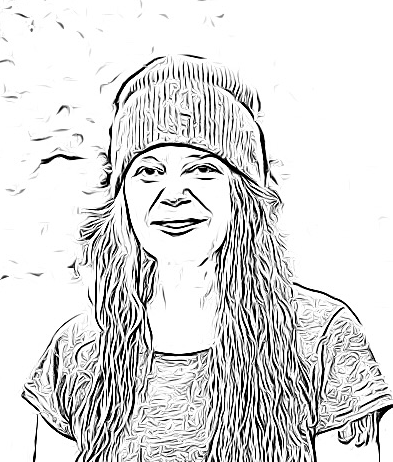 Finley de Witt (they/them) is a writer and trauma specialist. Their hilarious, shattering memoir LOVEBROKEN offers hope to anyone who's struggled with their relationships or their mental health: 'Trauma has never been so funny or so shocking.' Available from Barnes & Noble, Amazon and other outlets.
Finley de Witt (they/them) is a writer and trauma specialist. Their hilarious, shattering memoir LOVEBROKEN offers hope to anyone who's struggled with their relationships or their mental health: 'Trauma has never been so funny or so shocking.' Available from Barnes & Noble, Amazon and other outlets.
Just One Heart
A Cardiologist’s Guide to Healing, Health, and Happiness
© 2024 Dr. Jonathan Fisher
Introduction: Background of the Science of Mind-Heart Connection
The connection between the mind and heart—between thoughts and feelings—has fascinated many throughout history. A common belief is that our thoughts shape our emotions. In the 1890s, psychologist William James proposed that our feelings might precede and fuel our reasoning (2017). This revolutionary idea suggests that our brain’s primary function might be to rationalize feelings that originate, at least partly, in our hearts.
Contemporary medicine offers compelling examples of the mind-heart connection. Consider the placebo effect (Pardo-Cabello, Manzano-Gamero, and Puche-Cañas 2022). Recognized formally in the mid-twentieth century by anesthesiologist Henry K. Beecher during World War II, this phenomenon shows how perception and belief can significantly influence health outcomes (1946). Beecher observed that saline injections, believed to be powerful painkillers, relieved pain in 40 percent of wounded soldiers (Kienle and Kiene 1997). This illustrates the mind’s powerful impact on health.

Dr. Sandy Charles, a cardiologist and the medical director at Novant Health Women’s Heart and Vascular Center in Charlotte, North Carolina, emphasizes the significance of emotional care in heart health. Drawing inspiration from the experiences of her grandmother, Françoise Charles, who suffered not only from physical ailments but also from emotional distress, Dr. Charles emphasizes the necessity of a compassionate, understanding approach in health care. Her grandmother’s struggle with being persistently misunderstood by her health care providers highlighted the detrimental effects of neglecting the emotional and social aspects of care.
Dr. Charles champions a heart-centered, compassionate approach to healing. She goes beyond routine medical treatment in each encounter, ensuring that her patients feel heard and understood. She believes in engaging with patients on a deeper emotional level, which she believes is often a critical factor in their overall health and recovery. This approach addresses the physical symptoms and acknowledges the significant impact of emotional well-being on physical health.
The science of the mind-heart connection is not an academic, philosophical, or psychological theory; it’s a practical, observable reality. From the effects of placebos to the practices of medical professionals like Dr. Charles, it’s evident that our thoughts, feelings, and beliefs are essential factors in promoting health and well-being. As we explore this topic, we’ll uncover more about how the intricate relationship between our mind and heart shapes our lives.
Three Links in the Mind-Heart Chain: Mind, Body, and Behavior
Our mind and heart are connected by three broad mechanisms—changes in the mind, the body, and behavior—each having a significant influence on our cardiovascular and emotional health. This complex connection involves numerous body systems, most notably the autonomic nervous system (ANS).
The autonomic nervous system (ANS) serves as the main conduit between our mental states and physiological responses, and it oversees vital involuntary functions in our body. It consists of the sympathetic (SNS) and parasympathetic (PNS) nervous systems, each playing a distinct role. The SNS, often called the “fight or flight” system, activates during moments of stress to prepare the body for immediate action by increasing heart rate, dilating pupils, and directing blood flow to the muscles.
Conversely, the PNS is known as the “rest and digest” system and promotes relaxation and recovery by slowing the heart rate, constricting pupils, and aiding digestion. Together, these systems ensure our body can swiftly adapt to changing environments and internal needs.
In states of stress or perceived threat, our mental state tends to be agitated. The SNS, famously coined as the “fight or flight” system by Walter Bradford Cannon in 1915, is activated (1915). The body responds to this mental agitation by stimulating the hypothalamic-pituitary-adrenal (HPA) axis, cortisol release (discussed later in this chapter in “The Biochemical Link” section), and the sympathetic nervous system. This leads to physiological changes such as increased heart rate, blood pressure, and respiration, preparing the body for immediate action. The behavioral responses in these states can sometimes lead to unhealthy habits as a form of self-soothing or stress management.
The parasympathetic nervous system is pivotal in maintaining homeostasis within the human body. Dr. Herbert Benson, deeply motivated by his father’s early death due to heart disease, dedicated his life to researching ways to prevent and reverse this condition. His work on the “Relaxation Response,” as detailed in his collaboration with Klipper in 2000, emphasized how this response is activated during relaxation (2000).
This activation not only aids in physiological balance but also influences our mental state. In relaxed states, fostered by the parasympathetic nervous system’s activity, our perceptions and beliefs often shift toward a more positive outlook, enhancing our connection with others and contributing to overall well-being.

Dr. Gregory Fricchione, associate chief of psychiatry at Massachusetts General Hospital and director of the Benson-Henry Institute for Mind Body Medicine, emphasizes the significant physiological implications of the parasympathetic nervous system’s activation (Fricchione and Ting 2005). A relaxed mental state brings about reduced heart rate, lower blood pressure, and steadier respiratory rate. Additionally, an increase in heart rate variability (HRV), is notably mediated through the vagus nerve. HRV is a crucial indicator of resilience and adaptability in stressful situations.
The vagus nerve, the longest of the twelve cranial nerves, which originate directly from the brain, plays a pivotal role in transmitting signals to various organs, significantly contributing to the sense of physical well-being associated with relaxation. This nerve is essential in supporting the parasympathetic nervous system, which is fundamental for a balanced mind-body connection.
At the heart of the connection between our minds and bodies, the vagus nerve is central in shaping our reactions to stress and social interactions, profoundly influencing our overall well-being and capacity to form meaningful connections with others. Its Latin name, meaning “wandering,” aptly describes its long journey and widespread reach. The vagus nerve has a unique feature—sensory predominance. This means most of its fibers are dedicated to sending information from the body back to the brain rather than vice versa (Foley and Dubois 1937). These sensory fibers allow the vagus nerve to effectively monitor the state of vital organs like the heart, lungs, and digestive tract, contributing significantly to the body’s overall equilibrium.
Understanding the three broad pathways of the mind-heart connection and the role of the autonomic nervous system in this relationship can guide us toward more conscious management of our mental states, bodily responses, and behaviors. We can positively influence our heart health and overall well-being by actively fostering balance in these areas.
At the mental level, the activities of the mind, particularly our thoughts and emotions, directly affect the functioning of our hearts. Negative emotional states such as stress or anxiety can stimulate the release of hormones, including adrenaline, increasing heart rate and blood pressure, contracting the coronary arteries, and reducing blood flow to the heart muscle (endothelial dysfunction).
Mental stress has also been shown to trigger inflammation as measured by markers in the bloodstream (e.g., Interleukin 6), which can contribute to plaque build-up in the heart and other arteries (Mehta et al. 2022). In acute or extreme cases, the sudden stress-induced inflammatory response can stimulate the rupture of previously existing cholesterol-rich plaques and blood clotting. In contrast, positive emotions like joy and love can stimulate the release of chemicals like oxytocin that help the heart relax and recover.
Our body’s physical responses make up the second level of the mind-heart connection. The physiological changes resulting from our emotional and cognitive experiences, such as increased heart rate, high blood pressure, blood vessel constriction, and inflammation, can detrimentally impact heart health. However, positive emotions, effective stress management techniques, and healthy behaviors can support a healthy cardiovascular system.
Behaviors, rooted in conscious and unconscious thoughts, beliefs, and emotions play a fundamental role in heart health. Lifestyle habits, ranging from diet and exercise to alcohol and tobacco use, can either defend or compromise our heart health. Practices like a balanced diet, consistent physical activity, and fostering positive social bonds support heart health, whereas a sedentary lifestyle, poor nutrition, and smoking elevate heart disease risks.
As the American Heart Association highlighted, eight core heart health determinants include diet, physical activity, sleep health, body mass index, blood lipids, blood glucose, blood pressure, and nicotine exposure (Lloyd-Jones et al. 2022). These are not standalone factors; they’re deeply affected by daily decisions, emphasizing the interconnection between emotional health, behavior, and heart wellness.
Feelings, Emotions, Moods, and the Heart
Let’s continue our journey down the heart and mind highway by exploring where emotions come from. Emotions—primal, unconscious bodily responses—originate in the limbic centers of the brain, such as the amygdala, within seconds. They relay information to the more modern and uniquely human prefrontal cortical centers responsible for making sense of incoming data and planning.

Contrary to popular belief, feelings are distinct from emotions. Professor Antonio Damasio, chair of neuroscience at the University of Southern California, defines feelings as the meaning we assign to our emotions or “mental experiences of body states” (Damasio and Carvalho 2013). These interpretations are based on our memories, beliefs, and subjective labeling of experiences. For example, consider the emotional responses during public speaking, such as a faster heartbeat and tense muscles. While these are automatic emotional reactions, many individuals learn to manage these responses, thereby altering the resulting feeling. This suggests that our feelings, thoughts, and behaviors are determined by our perception of internal and external events and can be influenced and modified through training and practice.
Understanding and optimizing our emotional life requires grasping the concept of moods, which, while related to emotions and feelings, have distinct characteristics (Nettle and Bateson 2012). Moods such as contentment, boredom, pessimism, anxiety, irritation, or apathy are broader, more persistent emotional states.
Unlike specific emotions, which are immediate responses to events, moods are like emotional climates that envelop our being for extended periods, often without a direct or easily identifiable cause. They are composites of various emotions and feelings, lasting for days or weeks, subtly influencing our perception of the world and ourselves.
Over time, these moods shape our identity through their duration and recurrence. They can shift from transient experiences to seeming like constant elements of our personality. This gradual change can make us less aware of their presence as they morph from individual, momentary  experiences into a more persistent state of being. Moreover, moods have a significant impact on our physiological state. They can initiate self-protective actions, sending electrical and chemical signals through the autonomic nervous system (ANS). These signals have far-reaching effects on our bodies, potentially leading to physical consequences like inflammation, blood clotting tendencies, and accelerated cellular aging, often resulting from prolonged stress.
experiences into a more persistent state of being. Moreover, moods have a significant impact on our physiological state. They can initiate self-protective actions, sending electrical and chemical signals through the autonomic nervous system (ANS). These signals have far-reaching effects on our bodies, potentially leading to physical consequences like inflammation, blood clotting tendencies, and accelerated cellular aging, often resulting from prolonged stress.
Our emotions significantly impact brain function, influencing our ability to focus, thought patterns, energy levels, sleep, and appetite. Our hearts are also affected in real time by our emotional states. For instance, stress or anxiety can trigger the release of adrenaline, leading to increased heart rate and blood pressure, which can harm heart health over time. Conversely, positive emotions like joy and love can stimulate the release of endorphins, optimizing heart function.
For a practical perspective on these relationships between emotions and physical health, I consulted Dr. Liana Lianov. An expert in preventative health and lifestyle medicine, Dr. Lianov leads the Global Positive Health Institute and chairs the Happiness Science and Positive Health Committee at the American College of Lifestyle Medicine. She advocates for integrating positive psychology into health care, emphasizing the importance of harmonizing emotional and physical well-being. Dr. Lianov advises learning to manage our emotions and proactively nurture positive emotional states for overall health. Her work is part of an ongoing shift toward more comprehensive health care approaches encompassing physical and emotional well-being.
The Biochemical Link: Thoughts, Feelings, Hormones, and the Heart
Understanding the mind-heart connection also necessitates a look at the biochemical processes that drive this relationship. Our emotional and cognitive experiences prompt various biochemical responses in our bodies, with hormones playing a significant role. Our thoughts and feelings can cause hormone level changes, subsequently influencing heart health.
Distressing thoughts, especially those associated with stress, anxiety, or fear, trigger the release of the hormone cortisol (O’Connor, Thayer, and Vedhara 2021). Known as the “stress hormone,” cortisol forms part of our body’s fight-or-flight response, preparing us to react to perceived threats. It increases heart rate, blood pressure, and glucose levels, ensuring our bodies are ready for immediate action. However, when chronic stress and cortisol levels remain high over extended periods, it can contribute to various health issues, including heart disease.
On the other hand, positive thoughts and emotions—such as love, kindness, and belonging—can stimulate the release of oxytocin. Oxytocin is known for its role in social bonding, childbirth, and breastfeeding (Carter et al. 2020). However, it also has heart health benefits, like helping to lower blood pressure and reducing stress and anxiety. Studies also suggest that oxytocin is anti-inflammatory and may protect the heart by promoting cell regeneration.
Positive thinking can also stimulate the release of endorphins, the body’s natural painkillers (Pilozzi, Carro, and Huang 2020). Endorphins can create happiness and euphoria in response to stress or discomfort. They also help reduce stress and anxiety, regulate the heart rate, and enhance overall well-being, indirectly contributing to heart health.
Serotonin and dopamine, also known as “feel-good” hormones, are associated with happiness and pleasure (Schultz 2007; Young 2007). Pleasurable thoughts and experiences can stimulate the release of these hormones. While low levels of these hormones, particularly serotonin, have been linked with depression and other mental health disorders, emerging research suggests they might also, directly and indirectly, influence heart health.
These hormones and their associated biochemical reactions help regulate the extensive connections between our thoughts, feelings, and cardiovascular health. This biochemical link demonstrates that managing stress and cultivating positive psychological states can benefit heart health.
The Science of the Social Heart: Interpersonal Heart-Mind Connections
Humans, often described as social animals, are inherently wired for connection and interaction with others. Consequently, it’s unsurprising that the mind-heart connection extends beyond our internal states. This complex interplay between our thoughts, emotions, and heart’s well-being is not limited to what happens within us; it also significantly impacts and is influenced by our social interactions and relationships.

Let’s clarify this concept of the internal (what I think about as a “vertical” dimension connecting our mind and body) and interpersonal (a “horizontal” dimension between ourselves and others) dynamics of the mind-heart relationship to understand its significance in fostering total well-being.
This relationship’s internal, or vertical, aspect involves our inner world—the thoughts we harbor, the emotions we experience, and the beliefs we hold. These internal dynamics have a direct and measurable impact on our mental and cardiovascular health. When stressed, anxious, or burdened by negative emotions, our bodies react in ways that can lead to cardiovascular issues. Conversely, when we nurture positive emotions, cultivate resilience, and manage stress, we create an internal environment conducive to heart health.
On the other hand, the interpersonal, or horizontal, dimension of the mind-heart connection focuses on how our relationships and social interactions affect our mental and cardiovascular well-being. The quality of our connections with others, the support we receive from our social network, and the love and empathy we extend to those around us play a pivotal role in shaping our emotional health and, subsequently, our heart’s health. Strong social connections and a robust support system are often associated with lower stress levels, improved mental health, and better cardiovascular outcomes.
The mind-heart relationship’s internal and interpersonal dimensions are integral to our well-being. Understanding the intricate interplay between our inner world and our interactions with others is essential for fostering mental and cardiovascular health. As we continue our exploration, we’ll uncover how these two dimensions intersect and influence each other, providing valuable insights into the art of living with a healthy heart and a fulfilled mind.
This interconnectedness is backed by the insights provided by neuroscience and social psychology research, including concepts such as mirror neurons, emotional contagion, and polyvagal theory. First discovered in the 1990s during an experiment on macaque monkeys, mirror neurons fire in two scenarios: when an individual performs an action and when observing someone else performing the same action (Heyes and Catmur 2022).
These neurons—distributed in regions of the brain responsible for processing the words, actions, and intentions of others—help explain the neural basis for empathy. The discovery of these mirror neurons has added to our understanding of the science of social interactions, reminding us of the central role of empathy in maintaining healthy social relationships, which are the cornerstone of health and well-being.
Dr. Stephen W. Porges proposed the Polyvagal Theory in the 1990s (2011). Psychologist, neuroscientist, and author Porges expanded our understanding of the mind-heart connection. His theory details the interplay between our body, heart, and social environment, outlining three primary ways our body responds to different situations as well as the impact of these responses on our daily interactions with others (2022).
- The sympathetic system prepares us for action or defense.
- The ventral vagal branch of the parasympathetic system, which aids in relaxation and fostering social bonds, benefits from its increased myelination (insulation around the nerve) compared with the dorsal vagus pathway, allowing for more rapid and precise nerve signal transmission and enhancing our capacity for calm and connection. Think of it as high-speed internet for the nervous system, improving the speed and quality of internal communication.
- The dorsal vagal pathway can cause us to “freeze” when we perceive an overwhelming threat.
What’s fascinating is that we have an inbuilt “safety scanner,” termed by Dr. Porges as “neuroception.” It’s like our body’s silent alarm system, constantly checking whether we’re in a safe or risky situation. When everything seems okay, we’re more open to connecting with people, but our body might become protective if something feels off or dangerous.
Moreover, our body has a “priority list” when reacting to stress. We first try to handle things by connecting with others. If that doesn’t help, we might either get ready for action or freeze up. Dr. Porges emphasizes that we must feel safe and connected to heal, especially from challenging  experiences or traumas. This is a vital hint for therapists and counselors. Tapping into this body-heart connection can make a difference in helping people find balance, form better relationships, and boost overall well-being.
experiences or traumas. This is a vital hint for therapists and counselors. Tapping into this body-heart connection can make a difference in helping people find balance, form better relationships, and boost overall well-being.
Parallel to Porges’s work, Dr. Dan Siegel, clinical professor of psychiatry at the UCLA School of Medicine and author of Mindsight: The New Science of Personal Transformation, has pioneered research in the field of interpersonal neurobiology, exploring how our social interactions shape our minds and overall health (2010). Siegel explains that our minds are not simply products of our brains but also molded and changed by our relationships with others.
Taking a slightly differing approach, Paul Gilbert, the founder of compassion-focused therapy (CFT), emphasizes the importance of nurturing compassion for ourselves and others (2014). Gilbert’s research suggests that actively fostering empathy and compassion—as well as overcoming the many barriers that get in their way—activates our body’s soothing system, reducing stress and improving cardiovascular health.
One of the most captivating insights is how our body’s rhythms, like our heartbeat or feelings, can sync up with people around us. This shows just how deeply we’re wired to connect with others. Emotional contagion, the process by which one individual’s emotions can activate similar feelings in others, has a marked impact on human interactions (Herrando and Constantinides 2021).
Examples of emotional contagion in various settings like work, home, and community are numerous. In a work environment, a manager’s stress or enthusiasm can quickly spread among team members, affecting the group’s overall mood and productivity. At home, a family member’s anxiety or joy can similarly influence the emotional tone of the household. In community settings, the collective emotions of a group during events, whether joyous or sad, can lead to a shared emotional experience.

Such phenomena, deeply rooted in our evolutionary predisposition for empathy and group bonding, broaden our understanding of the mind-heart connection. Going beyond theoretical discussions, empirical studies have further elucidated this connection. For instance, Park et al. (2019) examined this process comprehensively, showing that participants’ heart rhythm patterns (HRPs) demonstrated notable synchronization during positive and negative emotional contagions with heightened synchronization mainly observed for negative emotions. This implies that our heart rates can synchronize with those of individuals we resonate with emotionally, leading to a shared physiological experience (Bizzego et al. 2019).
This has further implications for groups and organizations, where members’ emotional states and heart rhythms interact during shared experiences. Such findings highlight the heart’s deep interconnectedness between individuals and the community, emphasizing the importance of nurturing a positive emotional environment for heart health and group dynamics.
Understanding this intricate and dynamic link between our minds, hearts, and relationships underscores the importance of fostering healthy social connections to maintain well-being. It suggests that our emotional and physiological states are not isolated experiences but are closely intertwined with the experiences and emotions of others around us.
A comprehensive understanding of this interconnectedness is critical to improving mental and cardiovascular health. As a mindful heart doctor, I've witnessed firsthand the profound impact that mental, physical, and behavioral factors have on heart health. Our mind and heart are intricately connected through three primary mechanisms: changes in our mental state, physical responses in our body, and behaviors. This relationship is governed by our autonomic nervous system, which includes the sympathetic system that prepares us for 'fight or flight' during stress and the parasympathetic system that facilitates "rest and digest," aiding in recovery and relaxation.
In my practice, I often use mind-heart practices to help my patients and colleagues manage these connections more consciously. This approach not only promotes cardiovascular health but also enhances overall well-being. Here, I want to share some key practices that can strengthen the mind-heart connection and foster a deeper sense of openness and resilience.
Practices to Enhance Your Mind-Heart Connection
- Journaling for Self-Reflection
Write about your feelings, experiences, and thoughts for about ten minutes daily or several times a week. This simple act can help you identify and modify restrictive thought patterns and behaviors, enhancing your emotional openness.
- Mindfulness Meditation
Regular mindfulness practice can significantly reduce stress and promote a balanced response to life's challenges. Sit comfortably, focus on your breath, and observe the rise and fall of your chest. Whenever your mind wanders, gently guide your attention back to your breathing.
- Loving-Kindness Meditation (Metta)
This type of meditation nurtures empathy and compassion. Start by thinking of kindness and love toward yourself and gradually extend these feelings toward others, even those you may have disagreements with.
- Empathy Practice
Try to put yourself in someone else’s shoes daily, especially if their views differ from your own. This can break down barriers and cultivate a sense of shared humanity.
- Active Listening
Engage fully when others speak, focusing on their words, body language, and expressions without planning your response. This will open up genuine connections and help you embrace diverse perspectives.
- Gratitude Practice
Reflect on and jot down three things you are grateful for each evening. This practice cultivates an appreciation for life’s abundance and can positively shift your mindset.
- Engaging in New Experiences
Commit to exploring new ideas and places. This can be as simple as trying a new cuisine or attending a local event, helping you to maintain an open and curious mind.
Integrating these practices into your daily life can meaningfully impact your heart health and personal growth. Remember, cultivating an open heart and mind is a lifelong journey that enriches your own life and enhances the lives of those around you.
ABOUT THE AUTHOR
 Dr. Jonathan Fisher a Harvard-educated cardiologist and mindfulness teacher, integrates the physical, emotional, social, and spiritual dimensions of heart care. His personal journey through depression and burnout transformed his approach to health, inspiring him to create well-being programs for 38,000 team members. He is renowned for his work in clinician burnout, speaks globally, and leads well-being workshops and retreats. Living in Charlotte with his family, his mission is to help others "train the mind and heal the heart.”
Dr. Jonathan Fisher a Harvard-educated cardiologist and mindfulness teacher, integrates the physical, emotional, social, and spiritual dimensions of heart care. His personal journey through depression and burnout transformed his approach to health, inspiring him to create well-being programs for 38,000 team members. He is renowned for his work in clinician burnout, speaks globally, and leads well-being workshops and retreats. Living in Charlotte with his family, his mission is to help others "train the mind and heal the heart.”
Fare Well
May you and all beings be happy, loving, and wise
Perspectives on Self-Care
Be careful with all self-help methods (including those presented in this Bulletin), which are no substitute for working with a licensed healthcare practitioner. People vary, and what works for someone else may not be a good fit for you. When you try something, start slowly and carefully, and stop immediately if it feels bad or makes things worse.
The Wellspring Institute
For Neuroscience and Contemplative Wisdom
The Institute is a 501c3 non-profit corporation, and it publishes the Wise Brain Bulletin. The Wellspring Institute gathers, organizes, and freely offers information and methods – supported by brain science and the contemplative disciplines – for greater happiness, love, effectiveness, and wisdom. For more information about the Institute, please go to https://www.wisebrain.org/wellspring-institute.
If you enjoy receiving the Wise Brain Bulletin, please consider making a tax-deductible donation to the Wellspring Institute. Simply visit WiseBrain.org and click on the Donate button. We thank you.

